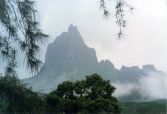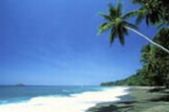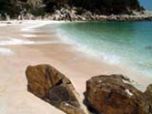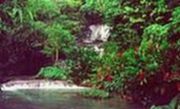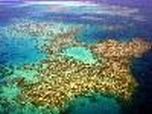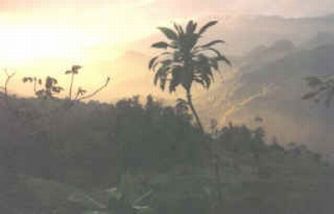
Costa Rica is Central America's jewel. It's an oasis of calm among its turbulent neighbors and an ecotourism heaven, making it one of the best places to experience the tropics with minimal impact. It's also mostly coastline,
which means great surfing, beaches galore and a climate built for laziness
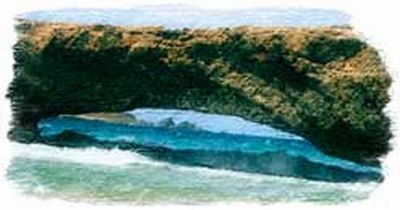
|
Currency History Sightseeing |
Culture Environment |

Currency: Costa Rican colón
Meals
|
Lodging
|
If you're coming from one of the poorer neighbourhoods such as Nicaragua or Honduras, Costa Rica can strike
you as the rather well-to-do Central American cousin with a proportionately high-dollar lifestyle. In reality,
it's a fast-developing country with an unabashed interest in the tourist dollar that, nevertheless, still
has hotels and nosheries for the shoe-string traveller. If you're traveling with someone else and don't mind
a bit of grunge living and a few low-rent meals, you should be able to scrape by on US$20 a day. If you're
planning to have your own bathroom, eat decently and catch an occasional plane, US$30-60 should cover your
needs. Travelers expecting to be very comfortable can easily spend US$100-150 per day, depending on their
definition of comfort. The best tours cost upwards of US$200 per day, but these include flights and first-class
accommodations and services. If you want to change cash, stick to US dollars (but make sure they're in decent
condition and avoid US$100 bills - due to a counterfeiting scam, most Costa Ricans won't touch them). US dollars
are your best bet for traveler's checks as well, as other currencies will rarely be accepted - any of the major
brands will do. If you buy colones with your credit card, expect to get hit with a huge interest bill. Banco
Popular, ATH and Credomatic have the largest number of ATMs and their networks often extend as far as the smaller
towns and cities. Some banks though, like branches of Banco Nacional, accept cards held by their customers only.
Visa and Mastercards are the most widely-accepted credit cards; you may have some trouble with American Express.
You don't usually need to bother with tipping at restaurants, as most add a 10% tip (plus 15% tax) to the bill.
You should tip bellboys and room cleaners about US$0.50, tour guides US$1-5 a day per person. Of course, if the
service is excellent or lousy you should use your own discretion.
Attractions
San José
The cosmopolitan capital of Costa Rica is the transportation hub of the country, so most visitors spend at least a few days in the city. It has a more North American feel to it than many Latin American capitals, with department stores, shopping malls and fast-food chains. However, it also has several excellent museums, some great restaurants, colourful markets and a fine climate. The best of the museums are the Museo Nacional, which has displays of Costa Rican archaeology, colonial furniture, costumes and religious art; the Museo del Oro Precolombino, which houses a dazzling collection of pre-Columbian gold pieces; and the Museo de Jade, with the world's largest collection of American jade sculptures. The most impressive city building is the Teatro Nacional, built in the 1890s. It hosts plays, operas, ballets and performances by the National Symphony Orchestra. The best market is Mercado Central, which bustles rather than buzzes, but has a range of goods from live turkeys to leatherwork, and some of the cheapest meals in town. Most of the cheaper hotels and eateries are west of Calle Central, between Avenidas 1 and 2.
Monteverde
This small community in northwestern Costa Rica was founded by Quakers in 1951 and is now a popular and interesting destination for both local and international visitors. The small town of Santa Elena is the closest settlement to the Monteverde cloud reserve but the road leading from the town's centre to the reserve is clustered with attractions including the butterfly garden,the serpentarium, a cheese factory, a and a number of art galleries. Interesting though these attractions are, they are merely the warm-up acts for the main event. The Monteverde Reserve has a number of walking trails (details of which can be found at the office of the Monteverde Conservation League at the mouth of the reserve) that vary in length and degree of difficulty. Tickets to the reserve cost US$8.50 (adults) and US$4.50 (children) and last all day. But why restrict yourself to the ground? The recently-opened Sky Walk, a series of suspension bridges that criss-cross the top of the jungle, leaves you walking on clouds, while the juiced up Canopy Tour whizzes you across the canopy of the jungle in a series of flying foxes. The more sedate Aerial Adventure offers a view of the tree tops via a ski-lift arrangement.
Pacific Beaches
If you've seen one too many macaws, you can swim or relax on one of Costa Rica's beaches. The Pacific coast has a pleasing mixture of luxury resorts and deserted beaches.Golfito is on the southern Pacific coast, tucked in a small bay off Golfo Dulce and is an important port and jumping-off point for the region's fantastic beaches. Heading northeast from the town, the coast features numerous remote coves, with jungle-lodge accommodations and virgin rain forest backdrop. The coastal Parque Nacional Corcovado, on the Península de Osa, has a huge colony of scarlet macaws. Beaches worth pausing at include Playa Cativo, Playa Zancudo (claimed by the locals to be the best swimming beach) and Pavones (which has some of the best Pacific surf). The central Pacific coast starts at Uvita and heads north to the Golfo de Nicoya and the city of Puntarenas. The beach-resort town of Jacó attracts package-holiday tourists and those keen to party hard. Puntarenas itself is too polluted for most foreigners to even dip their pinky: finnicky swimmers should head for the dozens of isolated islands that lie just off the coast, such as Isla Tortuga. Good surf close to Puntarenas can be found at Boca Barranca and Doña Ana.
Parks
The Costa Rica government has been concentrating on its parks and wildlife for well over forty years now, and the dedication has payed off in the quality and quantity of biological reserves and well-preserved eco-systems. The national park in the northwest of the country, Parque Nacional Volcán Arenal, has at its centre the perfectly conical (and iconical) 1633m (5356ft) Volcán Arenal. The volcano has been exceptionally active since 1968, when huge explosions triggered lava flows that killed several dozen people. The degree of activity varies from week to week; sometimes there is a spectacular display of flowing red-hot lava and incandescent rocks flying through the air; at other times, the volcano is more placid and gently glows in the dark. Parque Nacional Santa Rosa is the oldest and one of the best developed national parks in Costa Rica. It covers most of the Península Santa Elena, which juts out into the Pacific in the far northwestern corner of the country. It protects the largest remaining stand of tropical dry forest in Central America and is an important nesting site for endangered species of sea turtles. Two other environmental highlights include Rincón de la Vieja, northeast of Liberia in northwestern Costa Rica, and Parque Nacional Corcovado. The former is a volcanic wonderland of cones, craters, lagoons, boiling mud pools, sulphur springs, hot springs that visitors can bathe in, and a park that can be explored on foot or horse. Parque Nacional Corcovado, in the southwestern corner of the Península de Osa in the south of the country, has long-distance hiking trails which offers visitors the chance to spend several days walking through lowland tropical rain forest. Make sure you visit in the dry season, and keep your eyes peeled for wildlife. There are shorter walks around Monteverde and in the coastal Parque Nacional Manuel Antonio, south of Quepos.
Off the Beaten Track
Caribbean Coast (Costa Rica)
The Caribbean has more cultural diversity than the Pacific coast. Half of this coastal area is protected by national parks and wildlife refuges, which has slowed development and the building of access roads, making it an especially verdant place to get away from it all. The main city is Puerto Limón, which has a tropical park teeming with flowers and sloths. Parque Nacional Tortuguero is the most important Caribbean breeding ground of the green sea turtle and has plenty of birds, monkeys and lizards. The Creole beach paradise of Cahuita has a nearby national park with attractive beaches, coral reef and coastal rain forest. Bribri culture can be experienced in the surfing mecca of Puerto Viejo de Talamanca. Handicrafts, reggae, home stays and cultural tours make Puerto Viejo an especially interesting destination.
Península de Nicoya
This area on the northwestern Pacific coast is difficult to traverse because of the lack of paved roads; however, it's well worth the effort because it contains some of the country's best and most remote beaches. There are also some small and rarely visited wildlife reserves and parks. Parque Nacional Marino las Baulas de Guanacaste, just north of Tamarindo, includes Playa Grande, an important nesting site for the baula (leatherback turtle) - the world's largest turtle, which can weigh over 500kg (1105lb). Playa del Coco is the most accessible beach on the peninsula, in an attractive setting and with a small village, which has some nightlife. Good surfing and windsurfing can be found at Playa Tamarindo. Caving fans head for Parque Nacional Barra Honda, northeast of Nicoya, which protects some of Costa Rica's most interesting caves. Wildlife teems in the coastal Refugio Nacional de Fauna Silvestre Ostional, midway between Sámara and Paraíso. The main attraction is the annual nesting of the olive ridley sea turtle, but you'll also find iguanas, howler monkeys, coatimundis and flocks of numerous birds. One of the safest and prettiest beaches in the country is Playa Sámara, and Montezuma, near the tip of the peninsula, is a lovely, laid-back paradise for tired, young gringos. History
Mystery shrouds pre-Columbian Costa Rica: Few archaeological monuments and no proof of a written language have ever been discovered. Recorded history tends to begin with Christopher Columbus, who stayed for 17 days in 1502, and was so impressed by the gold decorations worn by the friendly locals he promptly dubbed the country Costa Rica, 'the rich coast'. Despite the lure of untold wealth, colonisation was slow to take hold and it took nearly 60 years for the Spanish settlers to make a dent in the tangled jungle. Once the process had started, however, Costa Rica, like its similarly-colonised neighbours, suffered the effects of European invasion. The indigenous population did not have the necessary numbers or organization to resist the Spanish, and their populations dwindled quickly because of susceptibility to European diseases. Adding to its initial ignominy, the hoped for hoards of gold never materialised and Costa Rica remained a forgotten backwater for many years. The 18th century saw the establishment of settlements such as Heredia, San José and Alajuela but it was not until the introduction of coffee in 1808 that the country registered on the radars of the 19th-century white-shoe brigade and frontier entrepreneurs looking to make a killing. Coffee brought wealth, a class structure, a more outward-looking perspective, and most importantly independence. A bizarre turn of events in 1856 provided one of the first important landmarks in the nation's history and served to unify the people. During the term of coffee-grower-turned-president Juan Rafael Mora, a period remembered for the country's economic and cultural growth, Costa Rica was invaded by US military adventurer William Walker and his army of recently captured Nicaraguan slaves. Mora organized an army of 9000 civilians that, against all odds, succeeded in forcing Walker & Co to flee. The ensuing years of the 19th century saw power struggles among members of the coffee-growing elite and the institution of the first democratic elections which has since been a hallmark of Costa Rican politics. Civil war, however, did raise its ugly head in the 1940s when ex-president Calderón and his successor, Picado, lined up against the recent ballot-winner Ulate (whose election win was not recognized by Picado's government) and José Figueres. After several weeks of warfare Figueres emerged victorious, formed an interim government and handed the presidency to Ulate. The constitution of 1949 finally gave women and blacks the vote and, controversially, dismantled the country's armed forces - giving Costa Rica the sobriquet of 'the only country which doesn't have an army'. President Oscar Arias received the Nobel Peace Prize in 1987 for his attempts to spread Costa Rica's example of peace to the rest of Central America. The peace has, in recent years, been disturbed by upheavals of a different kind. In July 1996, Hurricane César resulted in several dozen deaths and the cutting off of much of southern Costa Rica from the rest of the country. The Interamericana Highway was closed for about two months and the overall damage was estimated at about US$100 million. The ill-famed Hurricane Mitch of November 1998 caused substantial damage to Costa Rica, but the most catastrophic events occurred in the countries to the north, especially Honduras, Nicaragua and El Salvador. In February 1998 the Social Christian Unity Party's Miguel Angel Rodríguez won the presidency with almost exactly 50% of the vote. A conservative businessman who made the economy his priority, he went on to privatize state companies and encourage foreign investments in an effort to create jobs. By the time the February 2002 elections rolled around, however, ticos were mumbling about a lack of government transparency and shady deals between political mates. These grass-roots misgivings resulted in a 'no win' election, and pollsters returned to the ballot box in April 2002. Rodríguez's successor, Abel Pacheco of the conservative Social Christian Unity Party, was elected to step up to the president's ring. Culture
Costa Rica is noted more for its natural beauty and friendly people than for its culture. The overwhelming European influence erased almost all indigenous culture, and because Costa Rica was a country of subsistence agriculturalists until the middle of the 19th century, cultural activity has only begun to blossom in the last 100 years. By some estimates, over 90% of the country is Roman Catholic, at least in principle. In practice, most church attendance takes place at christenings, funerals and marriages. Blacks on the Caribbean coast tend to be Protestant, and there is a sprinkling of other denominations in San José, including a small Jewish community. Spanish is the official language, though English is understood in touristed areas. Many Caribbean blacks speak a lively dialect of English, known as Creole. Indian languages are spoken in isolated areas, primarily Bribri, which is estimated to be understood by about 10,000 people. No one goes to Costa Rica for the cuisine. Although traditional dishes run to the South American staples of beef, chicken and fish dishes, with rice, corn or beans and fresh fruit as supplements, most of this fare has given way to the ubiquitous pizza and burger option. And even these can only be included in 'cuisine' by stretching the definition to its breaking point. Also be warned that ticos love to spice up European dishes with salt - lots of it. We're talking lip-puckering, instant-dehydrating, body-shuddering proportions. On the positive side, their coffee is sublime. Even the coffee that accompanies the limp burger from the fast food joint is a cut above your average North American cup of coffee. Environment
Costa Rica is bordered to the north by Nicaragua and to the east by Panama. It has both a Caribbean and a Pacific coast. A series of volcanic mountain chains runs from the Nicaraguan border in the northwest to the Panamanian border in the southeast, splitting the country in two. In the center of these ranges is a high-altitude plain, with coastal lowlands on either side. Over half the population lives on this plain, which has fertile volcanic soils. The Caribbean coast is 212km (131mi) long and is characterized by mangroves, swamps and sandy beaches. The Pacific coast is much more rugged and rocky, and, thanks to a number of gulfs and peninsulas, is a tortuous 1016km (630mi) long. The country's biodiversity attracts nature lovers from all over the world. The primary attraction for many visitors is the 850 recorded bird species, which include the resplendent quetzal, indigo-capped hummingbirds, macaws and toucans. Costa Rica's tropical forests have over 1400 tree species and provide a variety of habitats for the country's fauna including four types of monkey, sloths, armadillos, jaguars and tapirs. There are also a number of dazzling butterflies. National parks cover almost 12% of the country, and forest reserves and Indian reservations boost the protected land area to 27%. Costa Rica is a tropical country and experiences only two seasons: wet and dry. The dry season is generally between late December and April, and the wet season lasts the rest of the year. The Caribbean coast tends to be wet all year. Temperatures vary little between seasons; the main influence on temperature is altitude. San José at 1150m (3772ft) has a climate that the locals refer to as 'Eternal Spring': lows average 15°C (60°F); highs average 26°C (79°F). The coasts are much hotter, with the Caribbean averaging 21°C (70°F) at night and over 30°C (86°F) during the day; the Pacific is a few degrees warmer still. The humidity at low altitudes can be oppressive.
San José
The cosmopolitan capital of Costa Rica is the transportation hub of the country, so most visitors spend at least a few days in the city. It has a more North American feel to it than many Latin American capitals, with department stores, shopping malls and fast-food chains. However, it also has several excellent museums, some great restaurants, colourful markets and a fine climate. The best of the museums are the Museo Nacional, which has displays of Costa Rican archaeology, colonial furniture, costumes and religious art; the Museo del Oro Precolombino, which houses a dazzling collection of pre-Columbian gold pieces; and the Museo de Jade, with the world's largest collection of American jade sculptures. The most impressive city building is the Teatro Nacional, built in the 1890s. It hosts plays, operas, ballets and performances by the National Symphony Orchestra. The best market is Mercado Central, which bustles rather than buzzes, but has a range of goods from live turkeys to leatherwork, and some of the cheapest meals in town. Most of the cheaper hotels and eateries are west of Calle Central, between Avenidas 1 and 2.
Monteverde
This small community in northwestern Costa Rica was founded by Quakers in 1951 and is now a popular and interesting destination for both local and international visitors. The small town of Santa Elena is the closest settlement to the Monteverde cloud reserve but the road leading from the town's centre to the reserve is clustered with attractions including the butterfly garden,the serpentarium, a cheese factory, a and a number of art galleries. Interesting though these attractions are, they are merely the warm-up acts for the main event. The Monteverde Reserve has a number of walking trails (details of which can be found at the office of the Monteverde Conservation League at the mouth of the reserve) that vary in length and degree of difficulty. Tickets to the reserve cost US$8.50 (adults) and US$4.50 (children) and last all day. But why restrict yourself to the ground? The recently-opened Sky Walk, a series of suspension bridges that criss-cross the top of the jungle, leaves you walking on clouds, while the juiced up Canopy Tour whizzes you across the canopy of the jungle in a series of flying foxes. The more sedate Aerial Adventure offers a view of the tree tops via a ski-lift arrangement.
Pacific Beaches
If you've seen one too many macaws, you can swim or relax on one of Costa Rica's beaches. The Pacific coast has a pleasing mixture of luxury resorts and deserted beaches.Golfito is on the southern Pacific coast, tucked in a small bay off Golfo Dulce and is an important port and jumping-off point for the region's fantastic beaches. Heading northeast from the town, the coast features numerous remote coves, with jungle-lodge accommodations and virgin rain forest backdrop. The coastal Parque Nacional Corcovado, on the Península de Osa, has a huge colony of scarlet macaws. Beaches worth pausing at include Playa Cativo, Playa Zancudo (claimed by the locals to be the best swimming beach) and Pavones (which has some of the best Pacific surf). The central Pacific coast starts at Uvita and heads north to the Golfo de Nicoya and the city of Puntarenas. The beach-resort town of Jacó attracts package-holiday tourists and those keen to party hard. Puntarenas itself is too polluted for most foreigners to even dip their pinky: finnicky swimmers should head for the dozens of isolated islands that lie just off the coast, such as Isla Tortuga. Good surf close to Puntarenas can be found at Boca Barranca and Doña Ana.
Parks
The Costa Rica government has been concentrating on its parks and wildlife for well over forty years now, and the dedication has payed off in the quality and quantity of biological reserves and well-preserved eco-systems. The national park in the northwest of the country, Parque Nacional Volcán Arenal, has at its centre the perfectly conical (and iconical) 1633m (5356ft) Volcán Arenal. The volcano has been exceptionally active since 1968, when huge explosions triggered lava flows that killed several dozen people. The degree of activity varies from week to week; sometimes there is a spectacular display of flowing red-hot lava and incandescent rocks flying through the air; at other times, the volcano is more placid and gently glows in the dark. Parque Nacional Santa Rosa is the oldest and one of the best developed national parks in Costa Rica. It covers most of the Península Santa Elena, which juts out into the Pacific in the far northwestern corner of the country. It protects the largest remaining stand of tropical dry forest in Central America and is an important nesting site for endangered species of sea turtles. Two other environmental highlights include Rincón de la Vieja, northeast of Liberia in northwestern Costa Rica, and Parque Nacional Corcovado. The former is a volcanic wonderland of cones, craters, lagoons, boiling mud pools, sulphur springs, hot springs that visitors can bathe in, and a park that can be explored on foot or horse. Parque Nacional Corcovado, in the southwestern corner of the Península de Osa in the south of the country, has long-distance hiking trails which offers visitors the chance to spend several days walking through lowland tropical rain forest. Make sure you visit in the dry season, and keep your eyes peeled for wildlife. There are shorter walks around Monteverde and in the coastal Parque Nacional Manuel Antonio, south of Quepos.
Off the Beaten Track
Caribbean Coast (Costa Rica)
The Caribbean has more cultural diversity than the Pacific coast. Half of this coastal area is protected by national parks and wildlife refuges, which has slowed development and the building of access roads, making it an especially verdant place to get away from it all. The main city is Puerto Limón, which has a tropical park teeming with flowers and sloths. Parque Nacional Tortuguero is the most important Caribbean breeding ground of the green sea turtle and has plenty of birds, monkeys and lizards. The Creole beach paradise of Cahuita has a nearby national park with attractive beaches, coral reef and coastal rain forest. Bribri culture can be experienced in the surfing mecca of Puerto Viejo de Talamanca. Handicrafts, reggae, home stays and cultural tours make Puerto Viejo an especially interesting destination.
Península de Nicoya
This area on the northwestern Pacific coast is difficult to traverse because of the lack of paved roads; however, it's well worth the effort because it contains some of the country's best and most remote beaches. There are also some small and rarely visited wildlife reserves and parks. Parque Nacional Marino las Baulas de Guanacaste, just north of Tamarindo, includes Playa Grande, an important nesting site for the baula (leatherback turtle) - the world's largest turtle, which can weigh over 500kg (1105lb). Playa del Coco is the most accessible beach on the peninsula, in an attractive setting and with a small village, which has some nightlife. Good surfing and windsurfing can be found at Playa Tamarindo. Caving fans head for Parque Nacional Barra Honda, northeast of Nicoya, which protects some of Costa Rica's most interesting caves. Wildlife teems in the coastal Refugio Nacional de Fauna Silvestre Ostional, midway between Sámara and Paraíso. The main attraction is the annual nesting of the olive ridley sea turtle, but you'll also find iguanas, howler monkeys, coatimundis and flocks of numerous birds. One of the safest and prettiest beaches in the country is Playa Sámara, and Montezuma, near the tip of the peninsula, is a lovely, laid-back paradise for tired, young gringos. History
Mystery shrouds pre-Columbian Costa Rica: Few archaeological monuments and no proof of a written language have ever been discovered. Recorded history tends to begin with Christopher Columbus, who stayed for 17 days in 1502, and was so impressed by the gold decorations worn by the friendly locals he promptly dubbed the country Costa Rica, 'the rich coast'. Despite the lure of untold wealth, colonisation was slow to take hold and it took nearly 60 years for the Spanish settlers to make a dent in the tangled jungle. Once the process had started, however, Costa Rica, like its similarly-colonised neighbours, suffered the effects of European invasion. The indigenous population did not have the necessary numbers or organization to resist the Spanish, and their populations dwindled quickly because of susceptibility to European diseases. Adding to its initial ignominy, the hoped for hoards of gold never materialised and Costa Rica remained a forgotten backwater for many years. The 18th century saw the establishment of settlements such as Heredia, San José and Alajuela but it was not until the introduction of coffee in 1808 that the country registered on the radars of the 19th-century white-shoe brigade and frontier entrepreneurs looking to make a killing. Coffee brought wealth, a class structure, a more outward-looking perspective, and most importantly independence. A bizarre turn of events in 1856 provided one of the first important landmarks in the nation's history and served to unify the people. During the term of coffee-grower-turned-president Juan Rafael Mora, a period remembered for the country's economic and cultural growth, Costa Rica was invaded by US military adventurer William Walker and his army of recently captured Nicaraguan slaves. Mora organized an army of 9000 civilians that, against all odds, succeeded in forcing Walker & Co to flee. The ensuing years of the 19th century saw power struggles among members of the coffee-growing elite and the institution of the first democratic elections which has since been a hallmark of Costa Rican politics. Civil war, however, did raise its ugly head in the 1940s when ex-president Calderón and his successor, Picado, lined up against the recent ballot-winner Ulate (whose election win was not recognized by Picado's government) and José Figueres. After several weeks of warfare Figueres emerged victorious, formed an interim government and handed the presidency to Ulate. The constitution of 1949 finally gave women and blacks the vote and, controversially, dismantled the country's armed forces - giving Costa Rica the sobriquet of 'the only country which doesn't have an army'. President Oscar Arias received the Nobel Peace Prize in 1987 for his attempts to spread Costa Rica's example of peace to the rest of Central America. The peace has, in recent years, been disturbed by upheavals of a different kind. In July 1996, Hurricane César resulted in several dozen deaths and the cutting off of much of southern Costa Rica from the rest of the country. The Interamericana Highway was closed for about two months and the overall damage was estimated at about US$100 million. The ill-famed Hurricane Mitch of November 1998 caused substantial damage to Costa Rica, but the most catastrophic events occurred in the countries to the north, especially Honduras, Nicaragua and El Salvador. In February 1998 the Social Christian Unity Party's Miguel Angel Rodríguez won the presidency with almost exactly 50% of the vote. A conservative businessman who made the economy his priority, he went on to privatize state companies and encourage foreign investments in an effort to create jobs. By the time the February 2002 elections rolled around, however, ticos were mumbling about a lack of government transparency and shady deals between political mates. These grass-roots misgivings resulted in a 'no win' election, and pollsters returned to the ballot box in April 2002. Rodríguez's successor, Abel Pacheco of the conservative Social Christian Unity Party, was elected to step up to the president's ring. Culture
Costa Rica is noted more for its natural beauty and friendly people than for its culture. The overwhelming European influence erased almost all indigenous culture, and because Costa Rica was a country of subsistence agriculturalists until the middle of the 19th century, cultural activity has only begun to blossom in the last 100 years. By some estimates, over 90% of the country is Roman Catholic, at least in principle. In practice, most church attendance takes place at christenings, funerals and marriages. Blacks on the Caribbean coast tend to be Protestant, and there is a sprinkling of other denominations in San José, including a small Jewish community. Spanish is the official language, though English is understood in touristed areas. Many Caribbean blacks speak a lively dialect of English, known as Creole. Indian languages are spoken in isolated areas, primarily Bribri, which is estimated to be understood by about 10,000 people. No one goes to Costa Rica for the cuisine. Although traditional dishes run to the South American staples of beef, chicken and fish dishes, with rice, corn or beans and fresh fruit as supplements, most of this fare has given way to the ubiquitous pizza and burger option. And even these can only be included in 'cuisine' by stretching the definition to its breaking point. Also be warned that ticos love to spice up European dishes with salt - lots of it. We're talking lip-puckering, instant-dehydrating, body-shuddering proportions. On the positive side, their coffee is sublime. Even the coffee that accompanies the limp burger from the fast food joint is a cut above your average North American cup of coffee. Environment
Costa Rica is bordered to the north by Nicaragua and to the east by Panama. It has both a Caribbean and a Pacific coast. A series of volcanic mountain chains runs from the Nicaraguan border in the northwest to the Panamanian border in the southeast, splitting the country in two. In the center of these ranges is a high-altitude plain, with coastal lowlands on either side. Over half the population lives on this plain, which has fertile volcanic soils. The Caribbean coast is 212km (131mi) long and is characterized by mangroves, swamps and sandy beaches. The Pacific coast is much more rugged and rocky, and, thanks to a number of gulfs and peninsulas, is a tortuous 1016km (630mi) long. The country's biodiversity attracts nature lovers from all over the world. The primary attraction for many visitors is the 850 recorded bird species, which include the resplendent quetzal, indigo-capped hummingbirds, macaws and toucans. Costa Rica's tropical forests have over 1400 tree species and provide a variety of habitats for the country's fauna including four types of monkey, sloths, armadillos, jaguars and tapirs. There are also a number of dazzling butterflies. National parks cover almost 12% of the country, and forest reserves and Indian reservations boost the protected land area to 27%. Costa Rica is a tropical country and experiences only two seasons: wet and dry. The dry season is generally between late December and April, and the wet season lasts the rest of the year. The Caribbean coast tends to be wet all year. Temperatures vary little between seasons; the main influence on temperature is altitude. San José at 1150m (3772ft) has a climate that the locals refer to as 'Eternal Spring': lows average 15°C (60°F); highs average 26°C (79°F). The coasts are much hotter, with the Caribbean averaging 21°C (70°F) at night and over 30°C (86°F) during the day; the Pacific is a few degrees warmer still. The humidity at low altitudes can be oppressive.
